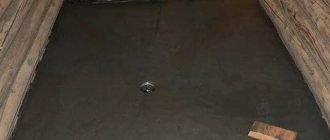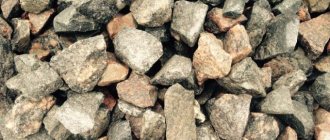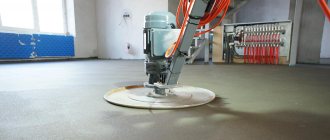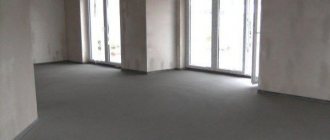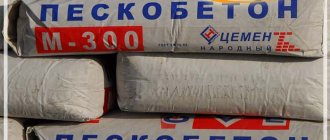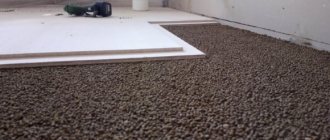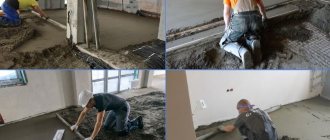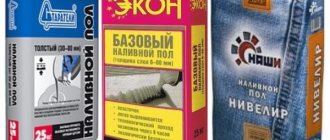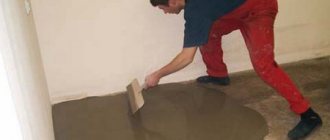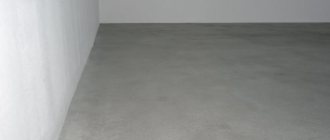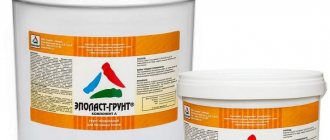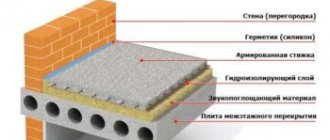A sandbox is a familiar attribute of every playground and a mandatory design element for play areas in kindergartens. Playing with sand is recommended by pediatricians and psychologists. They are useful for the development of fine motor skills, eye, creative thinking and imagination, and have a positive effect on the emotional state of children.
In this article we will talk about the requirements for sand for children's sandboxes, what sand cannot be used and why, as well as how to calculate the required volume of material.
Sand for children's sandboxes must have a quality certificate
What kind of sand should be used for a children's sandbox?
The requirements for sand for sandboxes are set out in GOST 8736-93 “Sand for construction work”.
The basic requirements for sand for children's sandboxes are as follows:
- It is necessary to use dry, environmentally friendly and safe river sand. It is allowed to use washed quarry sand that does not contain dirt, clay, gravel, stones and shells;
- It is optimal to use soft, loose sand with a fraction of 0.6 mm.
It is recommended to change the sand in the sandbox every season
Sand for children's sandboxes
The sandbox has always attracted small children. If a child passes by a sandbox, he will definitely want to play in the sand. What the magic of the sandbox is is unknown, but the fact that it is inherent in it is a fact.
But quite often parents are frightened by the state of the sandbox. After all, it is located in the yard, and you never know what kind of garbage can be thrown into it, etc. The hygiene and safety of the child is the main thing for the mother, so children are often not allowed to play in the sandbox. But what if the child really wants to make Easter cakes out of sand and make little Easter eggs in the shape of boats? Then there are only two ways out of the current situation - your own sandbox or a sandbox in kindergarten.
Sandbox in kindergarten
In theory, kindergartens must monitor the quality of sand, but just in case, it is advisable to double-check all this yourself. First, you need to find out what kind of sand is used for kindergarten. The best and optimal option is river sand, but for kindergartens the sand must be certified, that is, you must be provided with a certificate that this sand is safe and does not contain any impurities that may be harmful to the child. You also need to monitor the processing of sand in the kindergarten, because many different children play there. The sand must be clean; you can check this yourself by just “playing” in it a little. After the “game,” your hands should not be dirty, otherwise it means that the sand is either old or simply of poor quality.
If you are lucky, the sandbox in your kindergarten will fully comply with the requirements of sanitary standards, but if not, then it is much safer and better to arrange a personal sandbox for your child with your own hands. Of course, if you live in an apartment and do not have your own yard, then the optimal solution would be to take on the improvement of a children’s sandbox in the yard together with other enthusiasts. In both cases, you need to know how to care for the sandbox, so let's look at this topic.
What kind of sand should be in the sandbox?
We will analyze the whole process step by step, point by point, to make it more convenient and understandable.
- Sand selection
. So, which sand is best for a sandbox? The most optimal and profitable option is river sand for the sandbox. It is quite clean, small and pleasant. Some people use quartz sand for the sandbox, but this is not particularly profitable, since quartz sand is much more expensive than river sand, and it also needs to be changed twice a year. - Sand grain size
. River sand particles vary in size - small (up to 2 mm), medium (2-2.8 mm) and large (2.9-5 mm). Very fine sand can get into a child’s eyes even with a light wind, so it is better to take sand with a particle size of 1 to 2 mm - this is the best option. - Sand composition
. Sand should not contain clay and dust particles, sulfites, sulfates and sulfur. All these impurities can harm the child, so you need to carefully check the sand for quality, requiring a certificate or at least “determining” the purity of the sand by eye. - Amount of sand
. How much sand do you need for a sandbox? On average, a sandbox will require from 2 to 4 cubic meters of sand. Accurate calculations must be carried out knowing the size of the sandbox. - Buying sand
. The next question that will probably come to your mind is: “Where can I get sand for the sandbox?” There are several options. You can buy sand at a hardware store (don't forget to ask for a certificate so you don't buy regular building sand), or you can buy sand at the market. If you live near a river, you can dig up sand yourself, in which case you will definitely be sure of its quality. - Sanitary standards
. So, we bought sand for the children’s sandbox, poured it in, now we need to figure out how to care for the sandbox:
- change the sand twice a year so that it does not have time to become dirty;
- at night, the sandbox must be covered either with a special lid, which can be sold complete with the sandbox, or with a simple piece of tarpaulin;
- the area around the sandbox should be landscaped, as this, firstly, will provide shade for your child, and secondly, will prevent a lot of dirt from getting into the sand.
By following simple rules, you can create the ideal sandbox for your child, in which he can play for the joy of himself and you, because knowing that the child is safe and doing what he likes is the most wonderful feeling in the world.
What sand should not be used in a sandbox
Not suitable for children's games:
- crushed sand - its chips are very sharp; if grains of sand get into the eye, they can injure the cornea;
- quarry sand - due to the increased content of clay particles; it may also contain small pebbles.
- granite screening - you should not use it, since its fraction 0–5 implies the content of dust and grains with a diameter of more than 2 mm, which is unacceptable for a children's sandbox;
- construction sand - its grains have an angular shape; it cannot be used in sandboxes;
- dusty, with organic impurities - particles smaller than 0.1 mm can be easily inhaled. Such sand dust can cause silicosis of the lungs;
- old, dirty sand, dirty with wild and domestic animals, mice.
To avoid sand contamination, you need to cover the sandbox with a lid.
It is advisable to landscape the sandbox with lawn grass and additionally install a canopy that will protect from the sun in the summer heat. The play area should be regularly treated with a weak disinfecting solution to prevent the growth of microbes.
Basic requirements for a children's sandbox
Today, sandboxes for children are available for sale, made of wooden materials and with a simple design. Exclusive modifications from another technical base are also presented. Regardless of what the fun structure is made of, it must certainly meet key requirements so that children of all ages feel as comfortable as possible while staying there.
- High strength - the sandbox must be strong to avoid the appearance of cracks that could lead to damage to the structure.
- Maximum degree of safety - the absence of sharp edges on all elements will contribute to the safety of children.
- Environmentally friendly - the materials from which the equipment is made must be of high quality and do not emit toxic substances.
- Attractive design - the structure should be brightly decorated in order to attract the attention of children and spark interest in being in such a place.
It is important that the sandbox contains high-quality fine sand, which will be free of any impurities or small stones. To find sand that fully meets the high requirements, it is best to pay attention to the one that is packed in bags. Typically, this type of filling material is pre-cleaned from all kinds of harmful substances and is safe for use.
How much sand is needed for a sandbox
Regulatory documents do not stipulate requirements for the size of sandboxes; they can be either small or large. In this matter, you need to focus on the size of the playground and the number of children who will play in the sand. The optimal sandbox size is 4–5 m², depth is 30–40 cm.
Molding sand for children's sandboxes
It is not difficult to calculate how much sand will be needed to fill the sandbox: just determine its volume by multiplying the length by the width and height. Moreover, the height is not taken as the height of the structure, but the level of filling with sand, approximately 2/3 of the height of the sandbox. The resulting value is multiplied by the specific gravity of river sand, which is 1.63 t/m³.
Let's assume we have a 2 x 2 m sandbox with a height of 40 cm (let's fill it to 30 cm). We calculate the volume: 2 x 2 x 0.3 = 1.2 m³. We multiply by the specific gravity: 1.3 x 1.63 = 1.956 tons, that is, we will need 2 tons of sand.
offers river sand for children's sandboxes. We also offer molding sand in 50 kg paper bags. It has undergone heat treatment, which is optional, but allowed.
Requirements for sand for a children's sandbox
The material in a children's sandbox must first meet three main criteria:
- Safety. For the play sandbox, only sifted river sand can be used. The mountain equivalent is categorically unsuitable due to the high level of natural radiation and heavy metals it contains. According to sanitary and epidemiological requirements, this material must undergo special heat treatment to destroy the causative agents of any infections and diseases. It cannot contain piercing or cutting objects in the form of broken glass, sharp stones and metal fragments.
- Ecological cleanliness. Sand must be free from various chemical impurities. It should not contain dust, which can cause an allergic reaction in children.
- Aesthetic appearance. The material in the children's sandbox must be dry, homogeneous, without admixtures of clay, shells and pebbles, and cannot contain lumps of dirt.
The filler for children's sandboxes "Emelya" meets all of the above requirements. This is river alluvial sand without harmful impurities and foreign objects. It has a homogeneous structure and is aged in fractions from 0.1 to 0.7 mm. For additional protection from harmful microbes and bacteria, it is fired in a special oven at a temperature of 130°C.
You can purchase interactive sand for the Emelya children's sandbox in bags at a competitive price in the Gramat online store. When placing an order on our website, you can be sure that the sand you purchased is properly certified and suitable for preschool educational institutions. Its distinctive property is that it can be used both for playgrounds and for interactive sandboxes used in educational institutions.
Standard consumption rates
One bag 25 kg
The average consumption of cement for plaster is indicated on the packaging, taking into account a layer of 10 mm, and is individual for each manufacturer. If we apply a solution with a thickness of 2 cm, then we multiply the quantity by 2, etc. For plaster, the average consumption is 8.5 kg per sq.m.
If we take a 25 kg bag, then 8.5:25 = 0.34% of the amount of the bag will spread the plaster per 1 m2.
Let us consider in the table the calculation of cement consumption for plastering walls depending on the thickness of the applied layer at a standard consumption rate of 8.5 kg per square meter. m:
| 2 cm | 8.5*2 cm =17 kg. | 17kg : 25kg = 0.68 = 68% bag |
| 3 cm | 8.5*3cm = 25.5 kg. | 25.5 kg: 25 kg = 1.02 = 102%. One bag may not be enough for such a layer. |
| 4 cm | 8.5*4 cm =34 kg. | 34:25= 1.36 =136%. You need to purchase 2 bags. One will go completely, 1/3 of the second will be used. |
If you need to calculate the consumption of materials for a thicker layer, multiply the resulting amount by the layer thickness.
Marble chips give the “Bark Beetle” mixture a relief
The composition for finishing bark beetle plaster contains marble chips, which results in a relief surface with an interesting structure. Standard consumption ranges from 2.5 to 4 kg. Each manufacturer indicates these indicators on the label.
Venetian plaster is applied in a layer of several millimeters, resulting in a small mixture consumption of 70 to 200 grams per square meter. m. Working with such material requires experience; in order to apply it to the surface efficiently, it is better to invite a professional.
Gypsum compositions are consumed in a ratio of 9 kg per square meter. m. The plaster quantity calculator on our website will help you quickly calculate how much of this material will be needed for finishing work.
When purchasing a plaster mixture, you need to add 10% to the calculated amount of material so that you don’t have to run to the store during the work.
Types of cement mortars for plaster
Plaster mixtures used for wall finishing differ in the presence of certain components and their ratio. Divided into types:
| Cement-sand | They are used for rough interior and exterior finishing, resulting in a durable, moisture-resistant coating. Suitable for finishing walls, ceilings in unheated, damp rooms and for cladding facades. The constituent components are cement and various fillers: sand, plasticizers, etc. | The standard solution is prepared in a ratio of sand and cement 1:3. Cement grade M 400 can be diluted 1 part to 8 parts sand. M 100 is mixed in a ratio of 1:2. The composition is selected depending on the type of surface, layer thickness, and operating conditions. To increase plasticity, add PVA glue to the finished mixture in a ratio of 50-100 ml per 10 liters of the finished solution. |
| Cement-lime | They have good adhesion to all types of surfaces. Used for finishing plinths, cornices made of stone and wood. Lime has bactericidal properties and protects the surface from mold and fungal infections. | 1 part cement and lime to 5 parts sand. For a 25 kg bag of cement we take 21 kg of lime, 280 kg of sand, 50 liters of water. |
The cement composition is most often used for rough finishing of walls. A thin layer cracks during operation, so it is recommended to apply cement-sand mortars with a thickness of 3 to 6 cm, depending on the material from which the walls are made and the plaster application technology used.
For cement grade M500
- 0.0446:5=0.00892 m3;
- 0.00892:0.000769=11.6 kg (the number of kilograms of M500 cement required for plastering 1 m2 of wall).
When performing repair work yourself, you need to be able to correctly calculate the consumption of building materials. This will help you save money when purchasing them. Cement consumption per 1 m2 of plaster depends on the quality of the surface on which we will apply the solution, the technical characteristics of the mixture and the texture of the resulting coating.
Let's consider how to independently determine the mixture consumption depending on the thickness of the layer and the type of plaster used.
